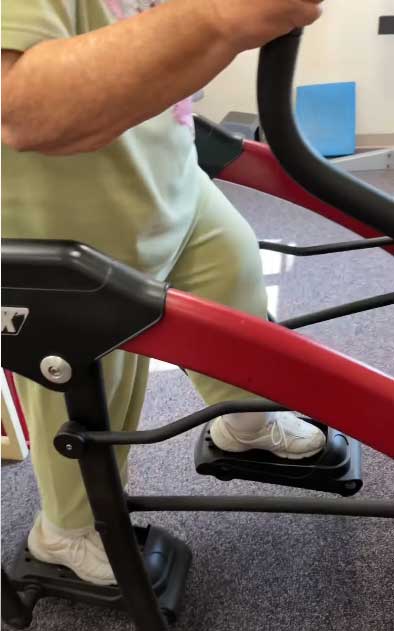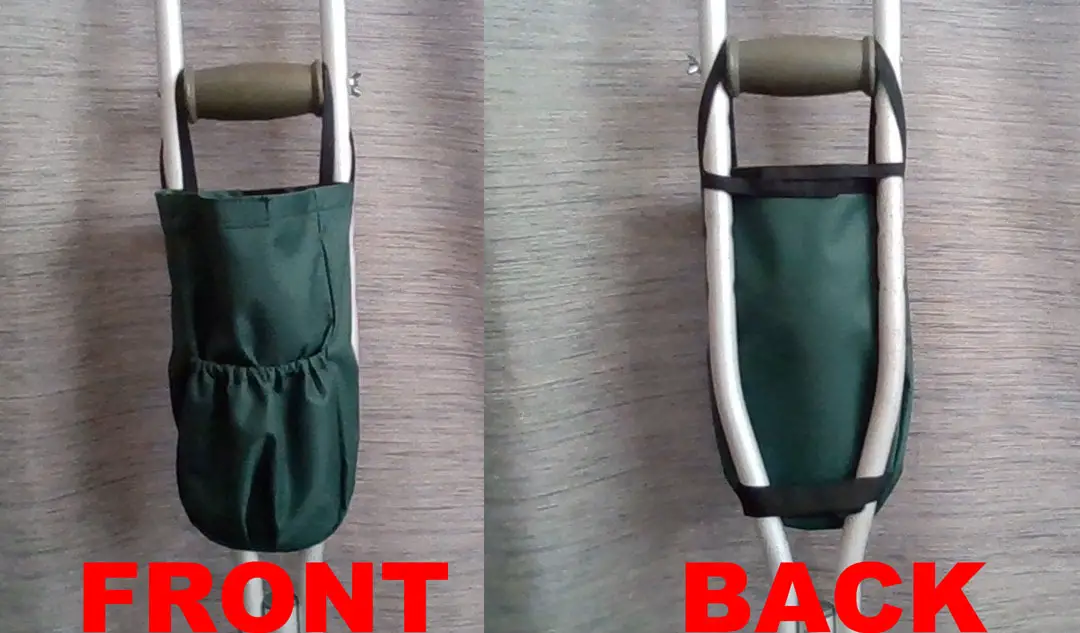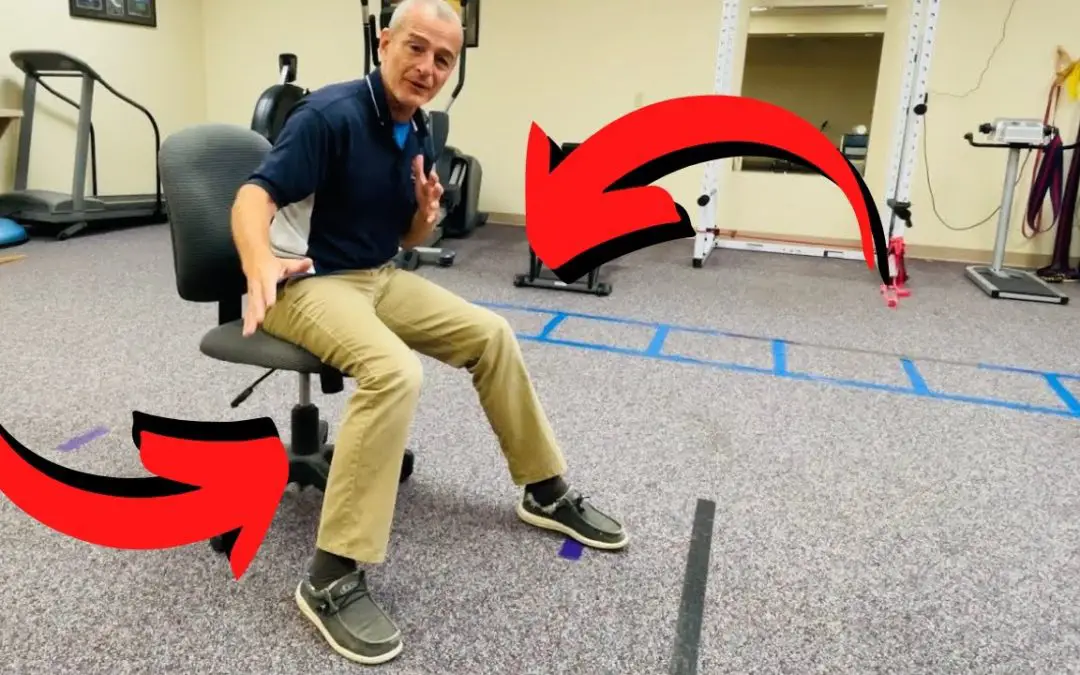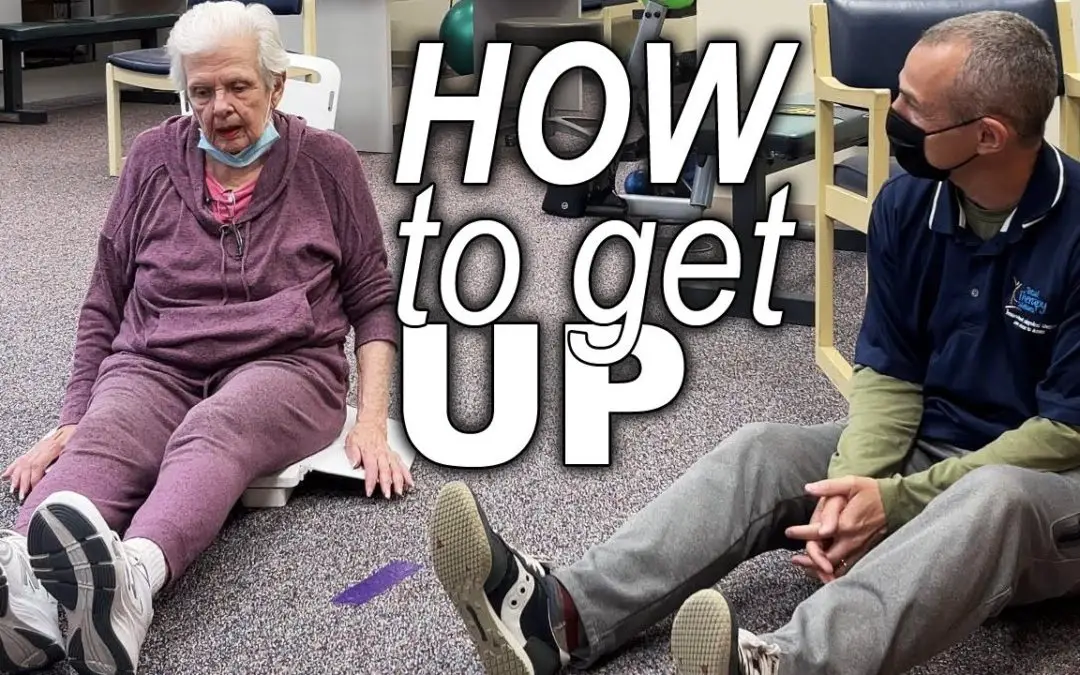Using an Elliptical Trainer After Total Knee Replacement Surgery
An elliptical trainer may be the best of all worlds when choosing an exercise machine after a total knee replacement surgery.
The elliptical trainer allows you to perform weight bearing exercise without the impact of walking or jogging on your new knee joint.
You also receive the benefits of a vertical component with each step or revolution.
Video: Benefits of the Elliptical Trainer Post Knee Replacement
Video Summary:
Tony Maritato, PT emphasizes the elliptical trainer as a highly effective equipment choice after undergoing a total knee replacement. Unlike treadmills and bikes, the elliptical offers weight-bearing exercises, promoting a more functional return to walking. It’s designed to reduce impact forces on joints, encourage symmetrical stride lengths, and is user-powered, ensuring safety and control during workouts.
Usage Instructions for the Elliptical Trainer
When using the elliptical, it’s essential to get on and off safely. To get on, one should position the pedals to step over with the non-surgical leg first, then step up with the surgical side. Gentle rocking can be initiated to warm up the surgical leg, followed by full revolutions. To get off, the surgical foot should be removed first, followed by the non-surgical foot.
Comparing the Elliptical to Other Equipment
While treadmills and stationary bikes have their advantages, Tony prefers the elliptical for post-surgery recovery. The treadmill can pose certain risks, and while bikes are great for range of motion, the elliptical’s weight-bearing nature makes it more functional for walking recovery. Regardless of the equipment, it’s crucial to choose what aligns with one’s recovery stage.
Is An Elliptical Trainer Safe After Total Knee Replacement
The elliptical trainer is a wonderful choice for exercise equipment following a total knee replacement surgery. You gain the advantage of weight bearing exercise to improve the health of the bones while minimizing the impact of walking or jogging.
Another benefit includes control over the vertical aspect of each step. The taller the incline on an elliptical trainer the greater your knee range of motion. This is better than walking when it comes to improving knee range of motion
One other often overlooked benefit of an elliptical trainer is the fact that your feet are moving in a rhythmic and reciprocal pattern.
Normal walking allows you to shorten one stride while taking a longer step on the non-surgical side. This imbalance may lead to other complications down the road.
When can I start using an elliptical trainer after surgery?
Many clients are able to start using an elliptical trainer within the first week following surgery.
The elliptical requires less knee range of motion than a typical stationary bike and is often more comfortable than walking.

How long should I use an elliptical trainer during each workout?
Most of my clients begin with a 2 minute episode the first time they use an elliptical following knee replacement surgery.
I often recommend stopping before you feel like you have to stop. This allows you to build confidence and focus on the quality of your motion instead of the quantity of your motion.
Early in the recovery process we want recommend you take ample rest breaks.
Elliptical Training Plan:
Day 1-10: Perform between 30-seconds and 2-minutes per episode and up to 4 episodes a day at a low intensity.
Day 11 – 28: Gradually increase the duration by 10% each day until you achieve a continuous episode of 10-minutes without shortness of breath. The intensity should feel like a 3/10 with 10/10 being so intense you are forced to stop.
Week 5 and beyond: Gradually increase duration of each episode to a maximum of 30-minutes. If you are able to perform 30-minutes of continuous walking on an elliptical trainer then reduce your duration and increase your resistance or elevation.
How do I know if I am doing too much?
The best way to determine if you are overtraining is to consider how you feel the same night of the next day after a workout. If you are more fatigued or your pain is increasing then you either need to exercise less or take a longer break between workouts.
I find that increasing fatigue and soreness along with possible increased stiffness and loss of range of motion are signs of overtraining.
If you are experiencing these symptoms consider taking a 48-hour rest break of all structured exercises and only perform normal daily activities.
Which is the best elliptical to purchase?
These days there are many varieties of elliptical trainers. Consider features like:
- moving arms
- a flat or angled foot plate
- the length and weight of the machine
- how difficult it may be to move around your home or apartment
- and the resale value of the brand
Is an elliptical better than a stationary bike?
PROS:
- Allows you to perform weight bearing exercise
- Burns more calories per minute
- Provides a total body workout
CONS:
- More expensive
- Takes up more space
- Harder to move around your home
What would a physical therapist choose?
I would choose an elliptical over a stationary bike simply because the long term benefits and use of an elliptical outweigh those of a bike.
Here are some of my recommended Elliptical Machines for home use:

Best Knee Massager for Arthritis in 2022
Choosing the Best Knee Massager for Arthritis In order for you to choose the best knee massager for arthritis, it is important you understand the different types of knee massagers and the different types of arthritis. Osteoarthritis Osteoarthritis (OA) is one of the...
![Buying an Ebike After Total Knee Replacement 2022 [VIDEO]](https://totaltherapysolutions.com/wp-content/uploads/2022/10/EBIKE-After-Total-Knee-Replacement-1080x675.png)
Buying an Ebike After Total Knee Replacement 2022 [VIDEO]
2022 Ebike After Total Knee Replacement Surgery Buying an ebike after total knee replacement surgery can be an amazing way for anyone who loves cycling to resume riding a bike outdoors sooner than expected.Can you ride an ebike after total knee replacement? Yes,...

Best Handmade Crutch Bags on Etsy
Best Handmade Crutch Bags on Etsy These are the coolest handmade crutch bags on Etsy because they are handmade and more importantly made by a patient of mine. * Disclosure: I am not paid to promote this product. I just think it is super cool when someone creates...

Why do people hate physical therapy so much?
Do people REALLY hate physical therapy? A recent Quora post I saw asked the question "Why do people hate physical therapy so much?" I think it boils down to a loss of control and the following three aspects: not knowing what to expect, not knowing how much it will...

KNEE PAIN – Why Does My Total Knee Replacement Still Hurt So Much
Pain is complex and multifaceted. If anyone claims to have a simple solution they are either misguided or misdirected.
If you have questions about pain please talk to a professional. Keep asking questions. You deserve support.
![What is a Heel Prop for Knee Extension [Video]](https://totaltherapysolutions.com/wp-content/uploads/2022/10/Heel-Prop-for-Knee-Extension-900x675.jpg)
What is a Heel Prop for Knee Extension [Video]
Heel Prop for Knee Extension Heel prop for knee extension is a great exercise to perform following a total knee replacement and ACL reconstruction surgery. The exercise may be performed while in a sitting or supine position.https://youtu.be/_Ql-TrBFRQE1. Passive Heel...
What Do I Need at Home After Total Knee Replacement: Day 1 to Week 12
What do I need at home after total knee replacement surgery? (Day of Surgery) Your surgical team should have provided you with a comprehensive checklist of required items you will need for home after your total knee replacement surgery. They will also provide you with...
Total Knee Replacement Exercises Week 1 – Ask Doctor Jo [VIDEO]
https://youtu.be/yL5maSn3M-gOriginal Reference: YouTube Channel Ask Dr. Jo Publish Date: Apr 11, 2016No Pain No Gain Unlike most of the other advice you will find on this website, Dr. Jo says a total knee replacement exercise is a time for punching into the pain. The...

Stool Scoots Exercise aka Chair Scoot Exercise | AMAZING Knee ROM 2022
What is the Chair Scoot Exercise? The chair scoot exercise is a great exercise for anyone who has had arthroscopic knee surgery or a total knee replacement. It is a great option for people who have had a partial knee replacement as well. It is a simple exercise to...

3 BEST Ways to get up from a Fall After Knee Replacement Surgery
How Common Do People Fall After Knee Replacement Surgery? A fall after knee replacement surgery is fairly common. One study found that "the number of falls reported following TKA ranges between 14.1 and 38.3%." Link What can cause a Fall After Knee Replacement Early...


